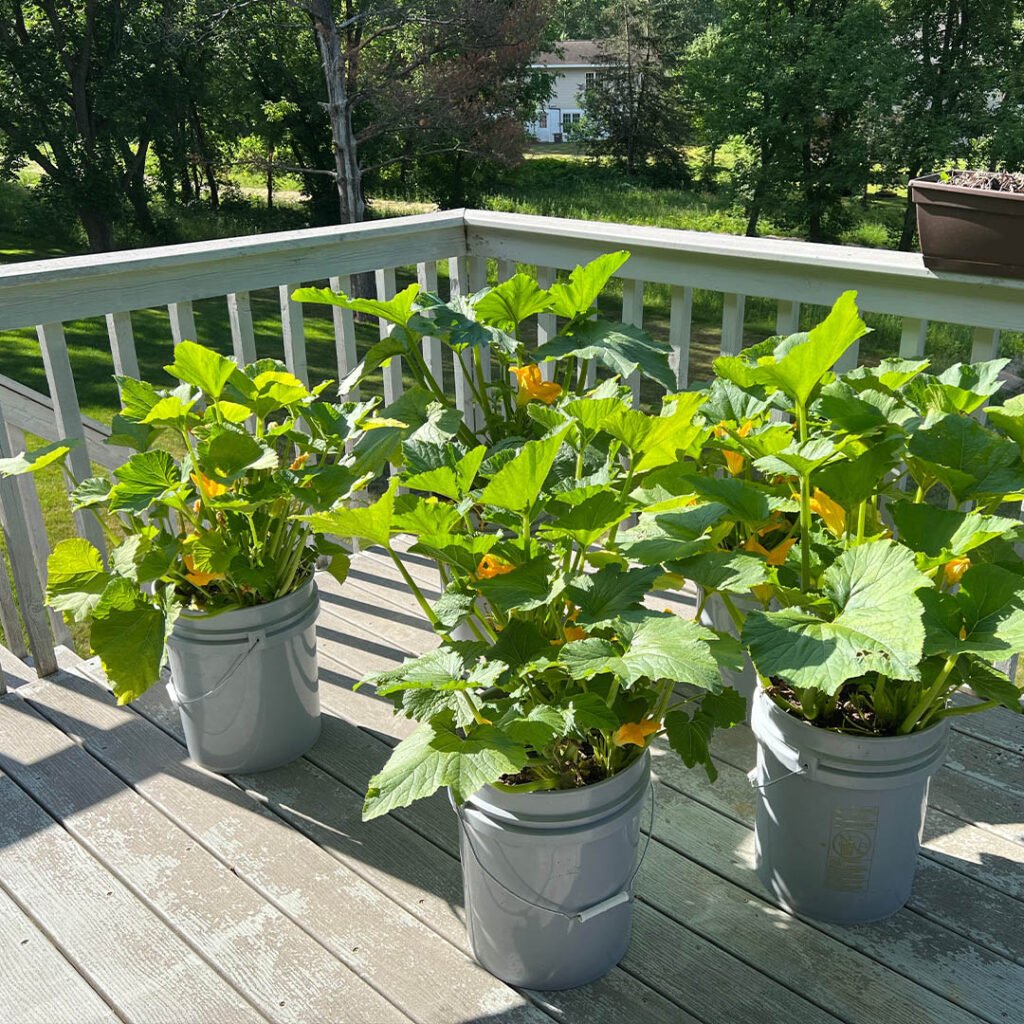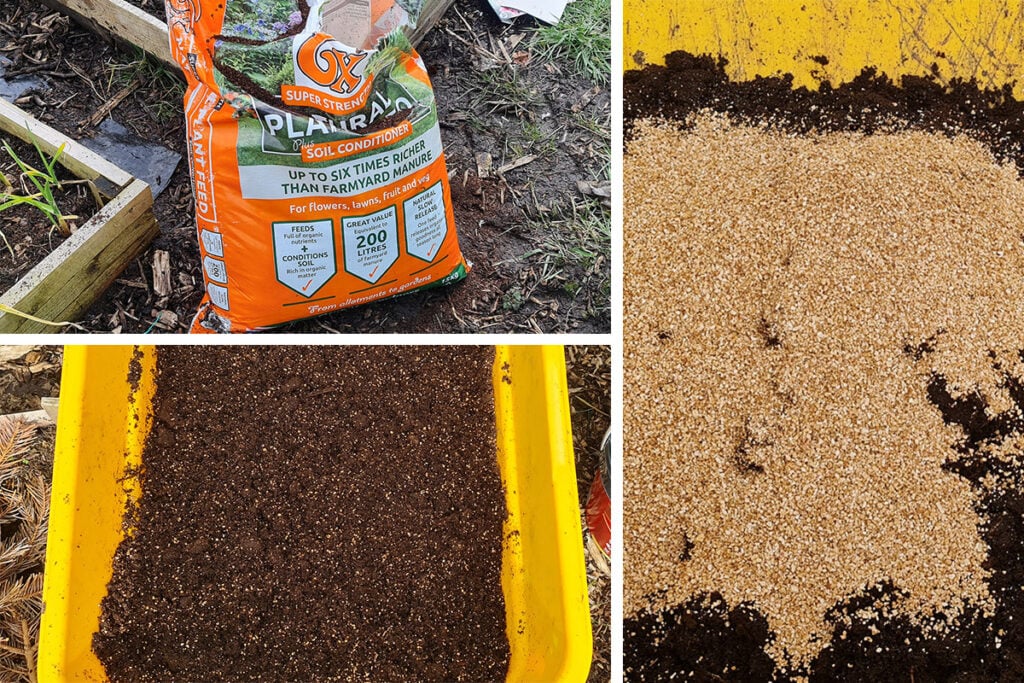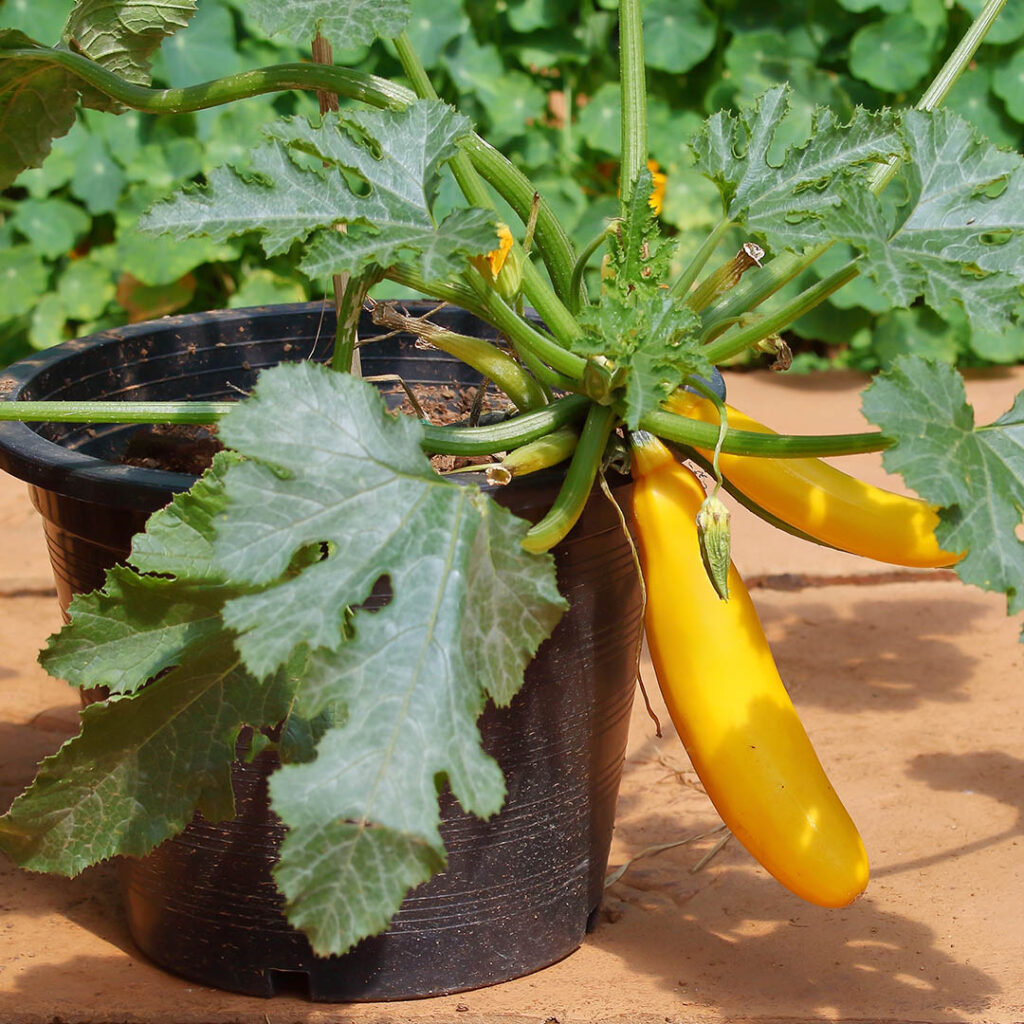Think you need a huge garden to grow courgettes? Think again! Courgettes thrive in pots, making it a perfect choice for small spaces, patios, or balconies. As long as you give them the right care, these fast-growing plants will reward you with loads of delicious squash all season long. Ready to get started? Here’s everything you need to know about growing courgettes in pots.

Pick the Right Pot
Courgettes plants need space to spread out, so go for a large container— ideally at least 15 litres, though 30-50 litres is even better. A wide, deep pot gives the roots room to grow and prevents the plant from drying out too fast. Make sure it has drainage holes to avoid soggy soil, which zucchini hates.
A builder's bucket can work well, but they are as small as I would ever go for growing courgettes. If you use a bucket, then the easiest way to add holes is with a drill.

Choose the Best Soil
Courgettes love rich, well-draining soil. A good-quality potting mix (not garden soil) works best. To boost nutrients, mix in some compost or well-rotted manure before planting.
You can also make up your own mix. I like to use compost, vermiculite and chicken manure to make my own potting mix. Chicken manure is very high in nitrogen and perfect for larger plants growing in pots.
Find out more about my DIY potting soil recipe here.

Planting Your Courgettes
You can start courgette from seeds or seedlings. If planting seeds, sow 2-3 seeds per pot, about 1 inch deep, and thin to the strongest plant once they sprout. If using a seedling, plant it right up to the first leaves.
Most people will have more success by growing or purchasing seedlings and then planting those. For us in the UK, you lose a lot of the growing season if you wait for your courgettes to germinate outdoors.
You can plant at the edge of the pot and have it sort of 'flop' over the side a little or grow it right in the center.

Starting From Seed Indoors
1. Choose the Right Timing
Start seeds 2-4 weeks before your last expected frost date. Since they don’t like being root-bound, you don’t want to start them too early.
2. Pick the Right Containers
Use 3-4 inch pots or biodegradable seed-starting cups. Courgette seeds are large and they produce large plants so they need a bit of space from the start.
3. Use Quality Soil
Fill your pots with light, well-draining seed-starting mix or general compost. Avoid heavy garden soil, as it can hold too much moisture and compact easily.
4. Plant the Seeds
Sow 1 seed per pot, about 1 inch deep, and gently cover them with soil. You can sow two to ensure you get one healthy plant, if both seeds sprout, keep the strongest one and snip the weaker one at the base.
5. Provide Warmth & Light
Courgette seeds germinate best at 20°C or above. Use a heat mat if needed. Once sprouted, place them under grow lights or near a sunny window for 12-14 hours per day to prevent leggy growth.
6. Keep Moist But Not Soggy
Water lightly but consistently, keeping the soil evenly moist but never waterlogged. Too much water can lead to damping off (a fungal disease that kills seedlings).
7. Harden Off Before Transplanting
Once seedlings have two to three sets of true leaves, start hardening them off about a week before planting outside. Gradually expose them to outdoor conditions for a few hours each day, increasing the time until they’re ready to go in the ground or pots permanently.
Sun & Water – The Key to Success
Courgette loves full sun, so place your pot somewhere it gets at least 6-8 hours of direct sunlight daily. Keep the soil consistently moist but not waterlogged. Water deeply whenever the top inch of soil feels dry. A layer of mulch on top helps retain moisture and keeps roots cool.
Feeding Your Plant
Since potted plants rely on you for nutrients, give courgettes a boost with a balanced fertiliser every couple of weeks. A liquid fertiliser high in nitrogen at the start will encourage leafy growth, while a bloom-boosting fertiliser (higher in phosphorus and potassium) helps with flowering and fruiting later on.
You can avoid having to fertilise as much by using a slow release fertiliser (like the chicken manure I add to my own soil mix) at the time of planting.
Supporting Your Courgettes
While bush varieties don’t need support, vining courgettes can benefit from a small trellis or stake to keep the plant upright. This saves space and improves airflow, reducing disease risk.
You could also try growing your courgettes vertically. If you want to learn more about that method then watch the video below!
Pollination & Flowers
Courgette has both male and female flowers. If your plant is blooming but not producing fruit, it may need help with hand pollination—just take a small brush or cotton swab to transfer pollen from the male to the female flowers. Bees usually handle this, but in small spaces, a little help goes a long way.
You can tell the male from the female flowers by looking for a little fruit behind the flower, if there is a fruit there, then this is a female flower.

This image is from a cucumber plant, but they are closely related to courgettes and have the same difference between the male and female flowers.
It is also a good idea to grow a few plants close to each other. This helps increase the chances that there is a female flower and a male flower open at the same time - increasing your natural chances of pollination.
Harvesting Time!
Once courgettes reach 6-8 inches long, it’s time to pick! Harvesting regularly encourages more production, so don’t let them sit too long, or they’ll turn into massive (and less tasty) giants.
Final Tips for a Bumper Crop
- Stick to compact or bush varieties like ‘Astia’ or ‘Black Beauty’ for pots.
- Watch out for powdery mildew—good airflow and watering at the base help prevent it.
- If space allows, plant marigolds or basil nearby to repel pests and attract pollinators.
That’s it! With the right setup, growing courgettes in pots is easy and super rewarding. Give it a try, and you’ll be enjoying fresh, homegrown courgettes in no time!



Leave a Reply